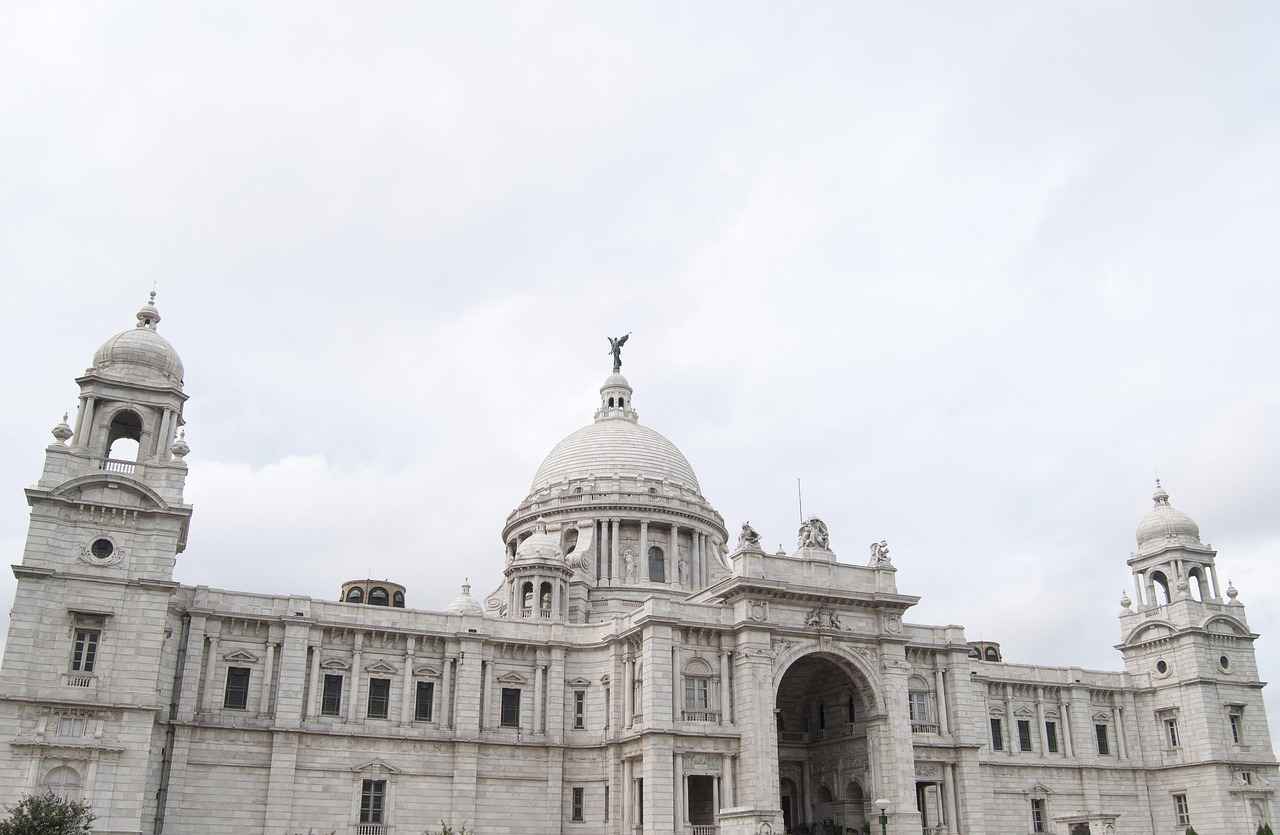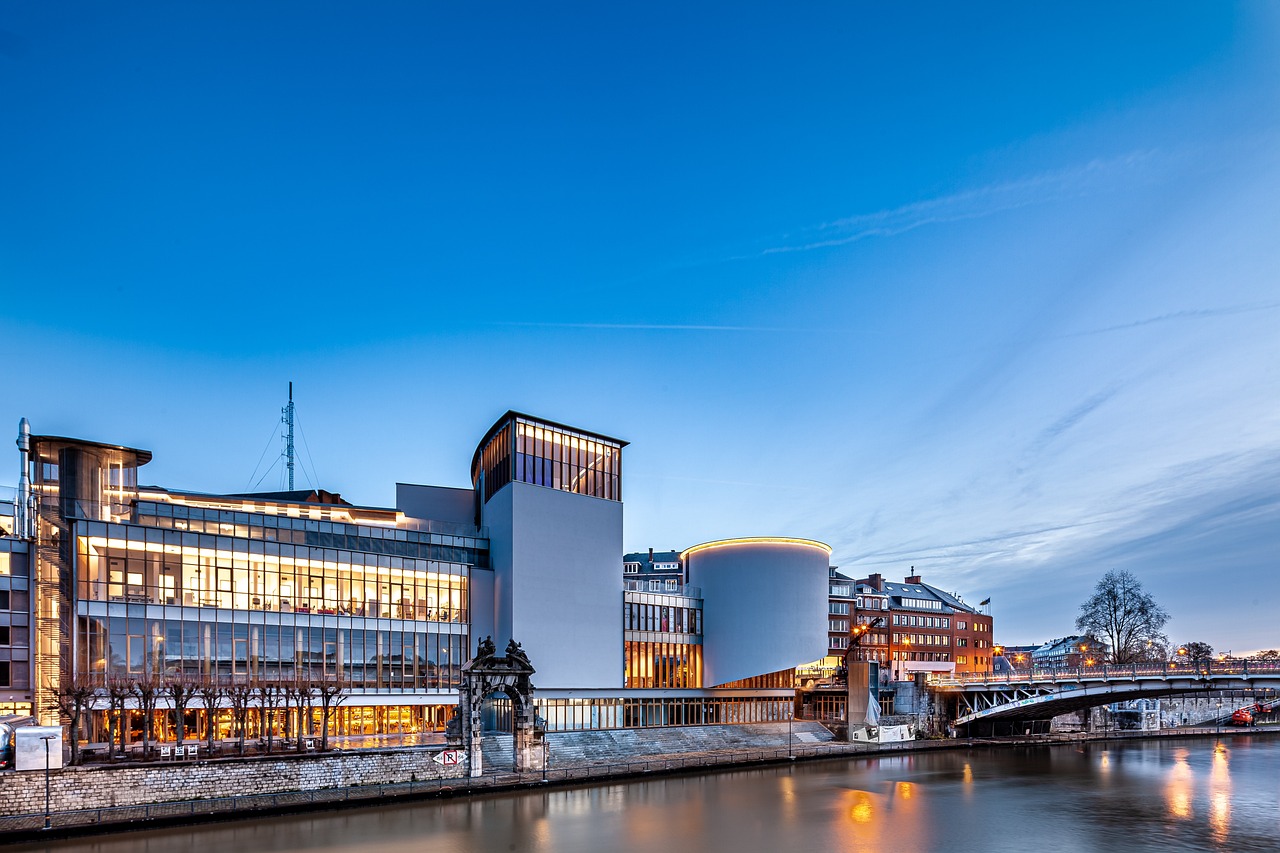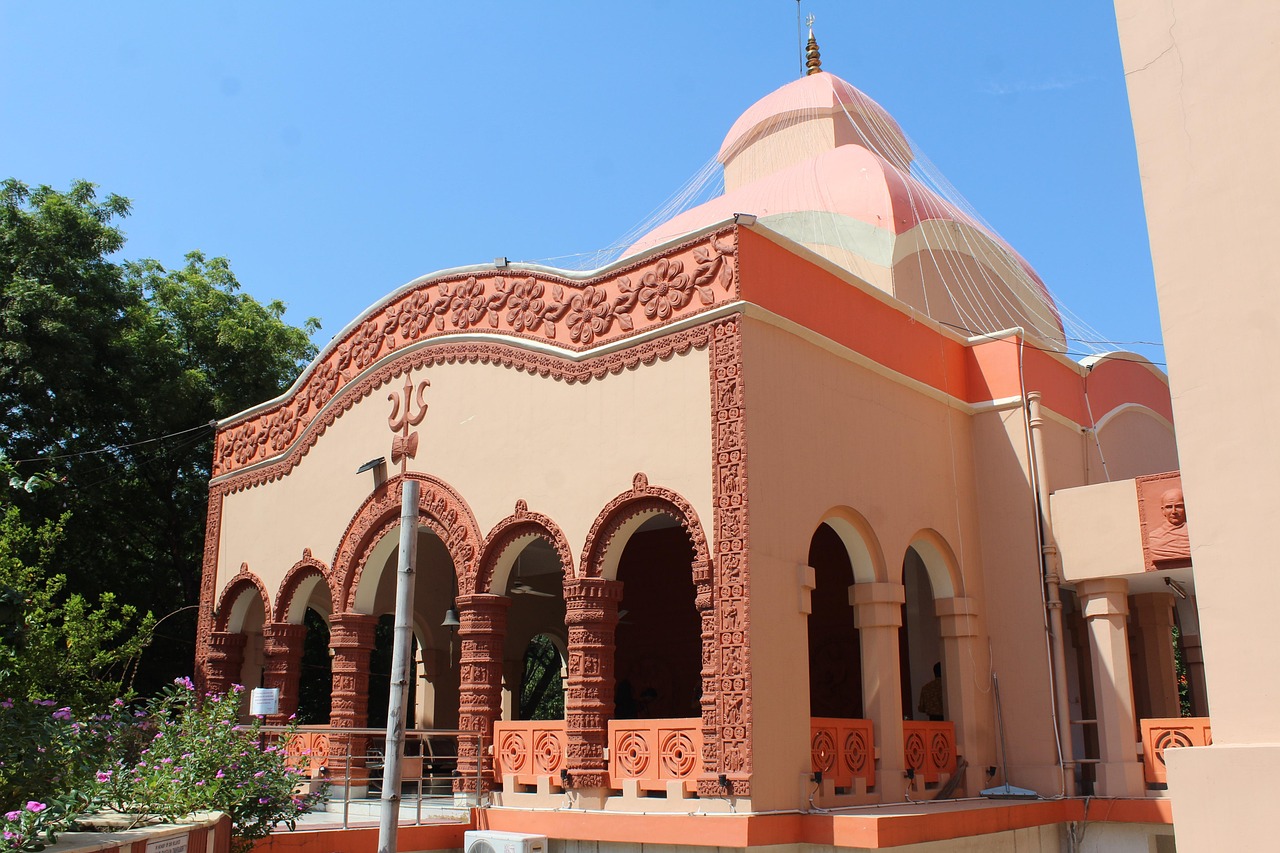This article delves into the multifaceted economic impact of tourism in West Bengal, illustrating its significant contributions to employment, local businesses, and overall economic growth. Additionally, it addresses the challenges and future prospects of this vital sector.
Overview of Tourism in West Bengal
West Bengal is a vibrant state in India, renowned for its rich cultural heritage, diverse landscapes, and historical significance. These attributes make it a prime destination for both domestic and international tourists, drawing millions each year.
Contribution to State GDP
Tourism plays a crucial role in West Bengal’s Gross Domestic Product (GDP), acting as a vital economic driver that supports various sectors and enhances the state’s overall economic performance.
Direct Economic Benefits
- Increased revenue from attractions and accommodations
- Boost in dining and entertainment sectors
- Creation of numerous job opportunities for local residents
Job Creation in the Tourism Sector
The tourism sector in West Bengal generates substantial employment opportunities, ranging from hospitality jobs to tour guides, thereby improving the livelihoods of many families across the region.
Investment in Infrastructure
Tourism stimulates investment in infrastructure, leading to improved transportation, healthcare, and communication facilities that benefit both tourists and local communities.
Indirect Economic Contributions
The indirect economic impacts of tourism extend to various sectors, including agriculture and retail, as local businesses thrive due to increased demand from tourists.
Impact on Local Businesses
Tourism fosters the growth of local businesses, including handicrafts, food vendors, and small-scale industries, which benefit from the influx of visitors and their spending.
Support for Artisans and Craftsmen
Tourism provides a platform for local artisans and craftsmen to showcase their work, enhancing cultural preservation and generating income through the sale of traditional crafts and souvenirs.
Boost to Hospitality Sector
The hospitality industry, including hotels, restaurants, and tour operators, experiences significant growth due to tourism, leading to increased competition and improved services for visitors.
Challenges Facing the Tourism Industry
Despite its benefits, the tourism industry in West Bengal faces challenges, including environmental concerns, infrastructure limitations, and the need for sustainable practices to ensure long-term growth.
Environmental Sustainability Issues
Tourism can lead to environmental degradation if not managed properly, necessitating the implementation of sustainable practices to preserve West Bengal’s natural resources and landscapes.
Infrastructure Development Needs
To accommodate the growing number of tourists, West Bengal requires ongoing investment in infrastructure, including transportation networks and hospitality facilities, to enhance the overall visitor experience.
Future Prospects of Tourism in West Bengal
Looking ahead, West Bengal’s tourism industry has the potential for significant growth, driven by strategic initiatives, government support, and a focus on sustainable tourism practices to attract more visitors.

Overview of Tourism in West Bengal
West Bengal is a vibrant state in India, celebrated for its rich cultural heritage, diverse landscapes, and historical significance. This unique combination makes it a prime destination for both domestic and international tourists. From the serene beauty of the Sundarbans to the bustling streets of Kolkata, West Bengal offers a plethora of experiences that cater to various interests.
The state is home to a variety of tourist attractions, including:
- The Sundarbans: A UNESCO World Heritage Site, known for its mangrove forests and royal Bengal tigers.
- Kolkata: The cultural capital of India, famous for its colonial architecture, art galleries, and vibrant festivals.
- Darjeeling: Renowned for its tea plantations and stunning views of the Himalayas, attracting nature lovers and adventure enthusiasts alike.
- Shantiniketan: A cultural hub founded by Rabindranath Tagore, known for its art and music festivals.
The state’s tourism sector not only enhances its cultural identity but also serves as a significant economic driver. The influx of tourists leads to increased demand for local products and services, thereby supporting small businesses and creating job opportunities. Local artisans, craftsmen, and hospitality providers benefit immensely from the growing tourism industry.
However, the tourism sector in West Bengal is not without its challenges. Issues such as environmental sustainability and the need for improved infrastructure are pressing concerns that require attention. Sustainable tourism practices are essential to ensure that the natural beauty and cultural heritage of West Bengal are preserved for future generations.
In conclusion, West Bengal stands out as a prime tourist destination in India, thanks to its rich heritage, diverse attractions, and economic potential. As the state continues to focus on sustainable growth and infrastructure development, it is poised to welcome even more visitors, further enriching its cultural tapestry and economic landscape.

Contribution to State GDP
The Economic Impact of Tourism in West Bengal
This article explores the multifaceted economic impact of tourism in West Bengal, highlighting its contributions to employment, local businesses, and overall economic growth, while addressing challenges and future prospects.
Tourism plays a crucial role in the economic landscape of West Bengal, significantly contributing to the state’s Gross Domestic Product (GDP). As a vital economic driver, tourism not only supports various sectors but also enhances the overall economic performance of the state.
In recent years, the tourism sector has witnessed a remarkable increase in visitor numbers, both from domestic and international sources. This surge has led to a direct increase in revenue generated from attractions, accommodations, and dining establishments. The financial influx from tourists has stimulated local economies, creating numerous job opportunities and fostering growth in related sectors.
Direct Economic Benefits
- Increased revenue from tourist attractions and services.
- Creation of job opportunities in hospitality, transportation, and retail.
- Enhanced investment in local infrastructure and services.
The direct benefits of tourism extend beyond financial gains. As the demand for various services rises, local businesses thrive, leading to a more vibrant economy. This growth not only improves the livelihoods of many families but also encourages the development of small-scale industries that cater to tourists.
Job Creation in the Tourism Sector
The tourism sector in West Bengal generates substantial employment opportunities, ranging from hospitality jobs to tour guides, thereby improving the livelihoods of many families across the region. This job creation is pivotal, as it helps reduce unemployment rates and boosts household incomes, contributing to a more stable economy.
Investment in Infrastructure
Moreover, tourism stimulates investment in infrastructure, leading to improved transportation, healthcare, and communication facilities that benefit both tourists and local communities. This investment is essential for sustaining long-term growth and ensuring that the state remains an attractive destination for visitors.
In conclusion, the contribution of tourism to West Bengal’s GDP is multifaceted, impacting various sectors and enhancing the overall economic landscape. As the state continues to embrace tourism as a key economic driver, it is crucial to focus on sustainable practices to ensure that its benefits can be enjoyed for years to come.
Direct Economic Benefits
The impact of tourism on West Bengal’s economy is profound, particularly in terms of . One of the most significant advantages is the increase in revenue generated from various sectors such as attractions, accommodations, and dining establishments. This influx of revenue not only bolsters the state’s economy but also plays a crucial role in creating numerous job opportunities for local residents.
When tourists visit West Bengal, they contribute to the economy by spending on various services. This spending is vital for the sustainability of local businesses, which include not only hotels and restaurants but also shops, markets, and entertainment venues. The revenue generated from these sectors helps to stimulate further economic activity, leading to a multiplier effect that benefits the entire community.
Moreover, the tourism sector encourages investment in local infrastructure. As demand for services grows, there is a corresponding need for improved roads, public transport, and facilities that cater to both tourists and residents. This development not only enhances the visitor experience but also improves the quality of life for locals.
In addition to direct financial benefits, the tourism industry fosters a sense of pride among local communities. Residents are often eager to share their culture and heritage with visitors, which helps to strengthen community bonds and promotes cultural exchange. This aspect of tourism is essential for maintaining the unique identity of West Bengal.
In conclusion, the direct economic benefits of tourism in West Bengal are significant and multifaceted. By boosting revenue, creating jobs, and enhancing local infrastructure, tourism serves as a vital component of the state’s economic landscape, paving the way for a prosperous future.
Job Creation in the Tourism Sector
The tourism sector in West Bengal plays a pivotal role in generating employment opportunities, which significantly contribute to the economic fabric of the region. This sector encompasses a wide array of jobs, ranging from hospitality roles in hotels and restaurants to positions as tour guides, each offering unique opportunities for local residents. The diverse job offerings not only provide immediate income but also foster long-term career development for many families across the state.
As West Bengal attracts both domestic and international tourists, the demand for skilled professionals in the tourism sector continues to rise. Hospitality jobs, for instance, require training and expertise, leading to the establishment of various vocational training programs. These programs equip individuals with the necessary skills to excel in their roles, thereby enhancing their employability. Moreover, as the tourism industry expands, the need for tour guides who can offer insightful experiences to visitors becomes increasingly important, creating additional job opportunities.
Furthermore, the ripple effect of job creation in tourism extends to other sectors. Local businesses, such as restaurants, craft shops, and transport services, benefit from the influx of tourists. This interconnectedness helps to create a vibrant local economy where various sectors thrive together. The increased spending by tourists not only supports existing businesses but also encourages new ventures, thereby further enhancing employment opportunities.
In conclusion, the tourism sector in West Bengal is a vital source of employment that not only supports families but also stimulates economic growth across the region. By investing in skills training and embracing sustainable tourism practices, West Bengal can continue to expand its job market, ensuring that the benefits of tourism are felt by all.
Investment in Infrastructure
plays a crucial role in enhancing the overall tourism experience in West Bengal. As tourism flourishes, it paves the way for significant investments in various infrastructural developments, which ultimately benefit both tourists and local communities.
One of the primary areas of improvement is transportation. With increased tourist footfall, the demand for better roads, railways, and air connectivity rises. The government and private sectors have responded positively by upgrading existing transport systems and introducing new routes. This not only makes travel more accessible for tourists but also facilitates easier movement for local residents, thereby enhancing their quality of life.
Moreover, the healthcare facilities in tourist hotspots are also seeing substantial improvements. Hospitals and clinics are being established or upgraded to cater to the needs of visitors. This investment ensures that tourists have access to quality medical care while also benefiting the local population by providing better healthcare services. Enhanced healthcare infrastructure is essential for maintaining the safety and comfort of tourists, which in turn encourages repeat visits.
In addition to transportation and healthcare, communication facilities are being upgraded to support the growing number of tech-savvy travelers. Improved internet connectivity and telecommunication services allow tourists to stay connected, share their experiences, and access information easily. For locals, these advancements in communication infrastructure can lead to better business opportunities and improved access to information.
Overall, the investment in infrastructure driven by tourism not only enhances the experience for visitors but also creates a ripple effect that positively impacts local communities. It fosters economic growth, improves living standards, and strengthens the overall fabric of society. As West Bengal continues to attract more tourists, the focus on sustainable and strategic infrastructure development will be imperative for long-term success.
Indirect Economic Contributions
The Indirect Economic Contributions of Tourism
Tourism is not just about leisure and exploration; it plays a pivotal role in shaping the economic landscape of regions, particularly in West Bengal. The indirect economic impacts of tourism extend beyond the immediate benefits to hotels and attractions, influencing various sectors such as agriculture, retail, and small businesses. This article delves into how tourism acts as a catalyst for growth in these areas.
| Sector | Impact of Tourism |
|---|---|
| Agriculture | Increased demand for local produce as restaurants and food vendors source ingredients from nearby farms, enhancing farmers’ income. |
| Retail | Local shops and markets experience a surge in sales due to tourist spending on souvenirs, clothing, and crafts. |
| Small Businesses | Entrepreneurs benefit from the influx of tourists, leading to the establishment of new ventures such as guided tours and artisan workshops. |
As tourists flock to West Bengal for its rich culture and scenic beauty, local agriculture sees a significant uplift. Farmers are increasingly engaging with the tourism sector by providing fresh produce to restaurants and markets that cater to visitors. This not only boosts their income but also promotes sustainable agricultural practices.
Furthermore, the retail sector thrives as tourists seek unique souvenirs and local crafts. Shops selling handmade items, traditional garments, and regional delicacies witness a boom in sales, which in turn supports local artisans and craftsmen. This symbiotic relationship between tourism and retail fosters a vibrant economic environment.
Small businesses also flourish, with many entrepreneurs tapping into the tourism market. From guided tours showcasing local heritage to workshops where visitors can learn traditional crafts, the opportunities are vast. This growth in small enterprises contributes to job creation and enhances the overall quality of life for residents.
In conclusion, the indirect economic contributions of tourism in West Bengal are profound. By stimulating sectors such as agriculture, retail, and small businesses, tourism not only drives economic growth but also fosters community development and cultural preservation. As West Bengal continues to attract tourists, the potential for sustained economic benefits remains promising.

Impact on Local Businesses
The Economic Impact of Tourism in West Bengal
This article explores the multifaceted economic impact of tourism in West Bengal, highlighting its contributions to employment, local businesses, and overall economic growth, while addressing challenges and future prospects.
Tourism serves as a powerful catalyst for the growth of local businesses in West Bengal. The influx of visitors not only enhances the visibility of local handicrafts, food vendors, and small-scale industries but also creates a vibrant marketplace that thrives on tourist spending. As tourists explore the rich cultural tapestry of the state, they contribute significantly to the local economy.
- Handicrafts and Artisanal Goods: Local artisans benefit immensely from tourism as they showcase their unique crafts. The demand for traditional items such as handwoven textiles, pottery, and jewelry rises, allowing artisans to generate income and preserve their cultural heritage.
- Food Vendors: Street food vendors and local eateries experience a surge in business as tourists seek authentic culinary experiences. This not only boosts their sales but also encourages the use of local ingredients, supporting farmers and suppliers.
- Small-Scale Industries: The tourism sector stimulates small-scale industries, creating a ripple effect that enhances job opportunities and fosters entrepreneurship. Local businesses can expand their offerings, catering specifically to the needs of tourists.
Furthermore, the growth of local businesses leads to a more diverse economic landscape, where residents can engage in various enterprises, enriching the community. The symbiotic relationship between tourism and local businesses creates a thriving ecosystem that benefits all stakeholders involved.
In conclusion, the impact of tourism on local businesses in West Bengal is profound. By supporting artisans, food vendors, and small industries, tourism not only boosts the local economy but also fosters cultural exchange and preservation. As the tourism industry continues to grow, it is essential to recognize and support these local enterprises to ensure sustainable economic development.
Support for Artisans and Craftsmen
Tourism plays a crucial role in promoting and sustaining the traditional arts and crafts of West Bengal. As visitors flock to the region, they bring with them a demand for authentic, locally-made products. This demand creates a unique opportunity for local artisans and craftsmen to showcase their talents and preserve their cultural heritage. By engaging with tourists, these skilled individuals not only gain exposure but also contribute to the economic vitality of their communities.
Local markets and fairs often serve as vibrant platforms where artisans display their creations, ranging from intricate handwoven textiles to beautifully crafted pottery. These venues allow tourists to interact directly with the creators, fostering a deeper appreciation for the craftsmanship involved. As visitors purchase these traditional crafts, they are not just buying souvenirs; they are investing in the livelihoods of artisans and helping to keep age-old traditions alive.
Moreover, the influx of tourists has led to the establishment of various training programs aimed at enhancing the skills of local craftsmen. These initiatives ensure that traditional techniques are passed down through generations, thereby safeguarding the cultural identity of West Bengal. By supporting artisans, tourism also encourages the innovation of new designs and products that blend traditional craftsmanship with modern aesthetics.
In addition to direct sales, tourism provides artisans with opportunities to participate in workshops and exhibitions, further elevating their visibility. This exposure can lead to collaborations with designers and businesses, opening new markets for their work. Consequently, the economic impact of tourism extends beyond immediate sales, fostering long-term sustainability for local artisans.
In conclusion, the support for artisans and craftsmen through tourism is a vital component of cultural preservation and economic development in West Bengal. By valuing and promoting traditional crafts, we not only enrich the tourist experience but also empower local communities, ensuring that their heritage continues to thrive.
Boost to Hospitality Sector
The hospitality sector in West Bengal has witnessed remarkable growth, primarily fueled by the flourishing tourism industry. As more tourists flock to this culturally rich state, the demand for quality accommodations, dining experiences, and tour services has surged, leading to a transformation in the hospitality landscape.
With the influx of visitors, hotels, restaurants, and tour operators are compelled to enhance their offerings. The growing competition among these establishments has resulted in improved services, innovative dining options, and unique guest experiences. This not only attracts more tourists but also encourages repeat visits, further solidifying West Bengal’s reputation as a premier tourist destination.
| Sector | Growth Drivers | Impact on Visitors |
|---|---|---|
| Hotels | Increased tourist arrivals | Enhanced accommodation options |
| Restaurants | Demand for diverse cuisines | Unique culinary experiences |
| Tour Operators | Interest in local culture | Customized tour packages |
Moreover, the hospitality sector plays a crucial role in job creation. With the expansion of hotels and restaurants, numerous employment opportunities arise, ranging from managerial positions to service staff. This not only improves the livelihood of many families but also contributes to the local economy by increasing disposable income and spending within the community.
In conclusion, the hospitality sector in West Bengal is experiencing significant growth due to the tourism boom. As competition intensifies, establishments are continuously improving their services, which ultimately benefits visitors. This dynamic environment not only enhances the overall tourist experience but also fosters economic development and job creation in the region.

Challenges Facing the Tourism Industry
Challenges Facing the Tourism Industry in West Bengal
While the tourism industry in West Bengal plays a crucial role in boosting the economy and supporting local communities, it is not without its challenges. Understanding these challenges is essential for developing effective strategies to foster sustainable growth and ensure the longevity of this vital sector.
- Environmental Concerns: The influx of tourists can lead to significant environmental degradation. Issues such as waste management, pollution, and the depletion of natural resources are prevalent. It is imperative to implement sustainable practices that protect West Bengal’s rich biodiversity and scenic landscapes.
- Infrastructure Limitations: Despite recent improvements, many areas in West Bengal still face inadequate infrastructure. This includes insufficient transportation networks, poorly maintained roads, and a lack of modern hospitality facilities. Enhancing infrastructure is crucial for accommodating the growing number of visitors and ensuring a seamless travel experience.
- Seasonality of Tourism: The tourism industry in West Bengal often experiences fluctuations based on seasons. Certain periods see a surge in visitors, while others remain stagnant. This seasonality can lead to inconsistent income for local businesses and employment instability for workers in the sector.
- Need for Sustainable Practices: There is a growing need for sustainable tourism practices that balance economic growth with environmental preservation. Encouraging eco-friendly initiatives and responsible tourism can help mitigate negative impacts and promote a more sustainable approach to tourism.
- Competition from Other Destinations: With numerous tourist destinations vying for attention, West Bengal faces stiff competition from other states and countries. To attract more visitors, it is essential to enhance marketing efforts and promote unique cultural and natural attractions.
In conclusion, addressing these challenges requires a collaborative effort from the government, local communities, and stakeholders in the tourism sector. By focusing on sustainable development and infrastructure improvements, West Bengal can capitalize on its tourism potential while safeguarding its environmental and cultural heritage.
Environmental Sustainability Issues
Tourism is a significant contributor to the economy of West Bengal, attracting visitors from around the globe to experience its rich culture and stunning landscapes. However, this influx of tourists can lead to environmental degradation if not managed effectively. The delicate balance between promoting tourism and preserving the environment is crucial for the long-term sustainability of West Bengal’s natural resources.
One of the primary concerns is the impact on local ecosystems. Increased foot traffic in popular tourist areas can lead to soil erosion, habitat destruction, and pollution. Additionally, the demand for infrastructure development, including hotels and roads, often encroaches upon natural habitats, threatening wildlife and biodiversity.
To combat these issues, it is essential to implement sustainable tourism practices. Such practices include:
- Eco-friendly accommodations: Encouraging hotels and lodges to adopt green practices, such as energy-efficient systems and waste reduction programs.
- Community involvement: Engaging local communities in tourism planning and decision-making ensures that their needs and concerns are prioritized.
- Education and awareness: Promoting environmental awareness among tourists can lead to responsible behavior, reducing the negative impact on the environment.
Furthermore, the government and tourism boards can establish regulations that limit the number of visitors to sensitive areas, ensuring that the natural beauty of West Bengal is preserved for future generations. By prioritizing sustainability, West Bengal can continue to thrive as a tourist destination while safeguarding its invaluable resources.
In conclusion, while tourism presents numerous economic opportunities for West Bengal, it is vital to address the environmental challenges it brings. By adopting sustainable practices and fostering a culture of environmental responsibility, West Bengal can protect its landscapes and ensure that tourism remains a positive force for both the economy and the environment.
Infrastructure Development Needs
As West Bengal continues to attract an increasing number of tourists, the necessity for robust infrastructure has become more pronounced. To ensure a seamless and enjoyable experience for visitors, significant investments in various infrastructure sectors are essential.
- Transportation Networks: The state must enhance its transportation systems, including roads, railways, and airports. Improved connectivity will facilitate easier access to popular tourist destinations, reducing travel time and enhancing convenience for visitors.
- Hospitality Facilities: With the rising tourist influx, there is a pressing need for more hotels, guesthouses, and other accommodation options. Upgrading existing facilities and developing new ones will cater to diverse budgets and preferences, ensuring that all visitors find suitable lodging.
- Public Amenities: The availability of clean restrooms, information centers, and recreational areas is vital for a positive visitor experience. Investments in these public amenities will not only enhance the comfort of tourists but also reflect the state’s commitment to hospitality.
- Digital Infrastructure: In today’s digital age, having reliable internet access is crucial. West Bengal should invest in improving its digital infrastructure, including Wi-Fi hotspots in tourist areas, to cater to the tech-savvy traveler.
- Safety and Security Measures: Ensuring the safety of tourists is paramount. Investments in security personnel, surveillance systems, and emergency services will enhance the overall safety of visitors, encouraging more people to explore the region.
In summary, to accommodate the growing number of tourists effectively, West Bengal must prioritize ongoing investment in essential infrastructure. This will not only enhance the overall visitor experience but also contribute to the long-term sustainability and growth of the tourism sector.

Future Prospects of Tourism in West Bengal
As we look towards the future, the tourism industry in West Bengal stands on the brink of remarkable growth. This potential is fueled by a combination of strategic initiatives, robust government support, and an emphasis on sustainable tourism practices. These factors are crucial for attracting a larger number of visitors, both domestic and international.
One of the key drivers of this growth is the government’s commitment to enhancing tourism infrastructure. Investment in roads, airports, and public transport systems will significantly improve accessibility to popular tourist destinations such as Darjeeling, Kolkata, and the Sundarbans. Furthermore, initiatives aimed at promoting cultural festivals and heritage sites will draw more tourists eager to experience the rich traditions of West Bengal.
Moreover, the focus on sustainable tourism is becoming increasingly important. By implementing eco-friendly practices, the state can preserve its natural beauty while attracting environmentally conscious travelers. This includes promoting responsible tourism that benefits local communities and minimizes environmental impact.
| Key Initiatives for Growth | Description |
|---|---|
| Infrastructure Development | Improving transport and hospitality facilities to enhance visitor experience. |
| Cultural Promotion | Highlighting festivals and heritage sites to attract tourists. |
| Sustainable Practices | Encouraging eco-friendly tourism to preserve natural resources. |
In addition to these initiatives, collaboration with local businesses is essential. By fostering partnerships between the government and local entrepreneurs, West Bengal can create a vibrant tourism ecosystem that not only attracts visitors but also supports the local economy. This collaboration can lead to the development of unique tourism packages that showcase the state’s diverse offerings, from culinary experiences to adventure tourism.
In conclusion, the future of tourism in West Bengal looks promising. By leveraging strategic initiatives and focusing on sustainability, the state can position itself as a premier destination in India. The combined efforts of the government, local businesses, and the community will be pivotal in realizing this vision, ultimately leading to a thriving tourism sector that benefits all.
Frequently Asked Questions
- What are the main attractions for tourists in West Bengal?
West Bengal boasts a variety of attractions, including the stunning Sundarbans, the cultural hub of Kolkata, and the serene hill stations like Darjeeling. Each spot offers unique experiences, from wildlife adventures to rich historical explorations.
- How does tourism contribute to the local economy?
Tourism significantly boosts the local economy by creating jobs, supporting small businesses, and increasing revenue from attractions and accommodations. It acts like a lifeline for many families, ensuring that local artisans and vendors thrive.
- What challenges does the tourism industry face in West Bengal?
Despite its growth, the tourism industry in West Bengal grapples with challenges such as environmental sustainability issues and inadequate infrastructure. These hurdles need to be addressed to ensure long-term benefits for both tourists and locals.
- How is the government supporting tourism in West Bengal?
The government is actively supporting tourism through strategic initiatives, investments in infrastructure, and promoting sustainable practices. This support is crucial for enhancing the visitor experience and attracting more tourists.
- What is the future outlook for tourism in West Bengal?
The future of tourism in West Bengal looks promising, with potential for significant growth driven by government initiatives and a focus on sustainable tourism practices. This could lead to increased visitor numbers and economic benefits for the region.



























































